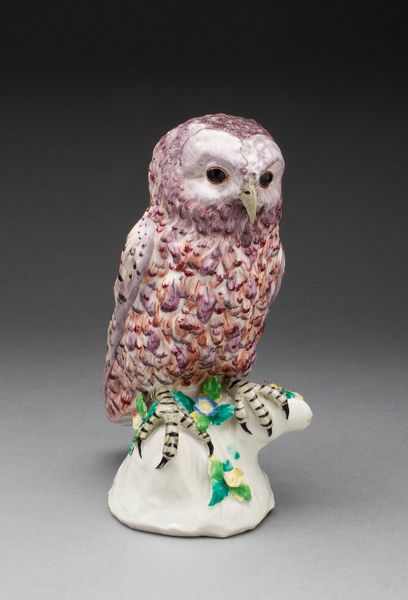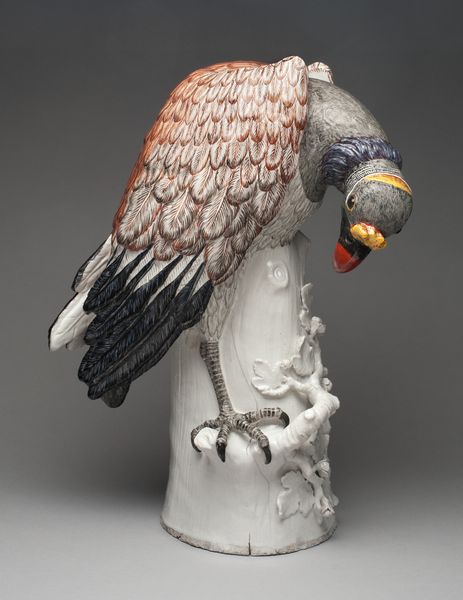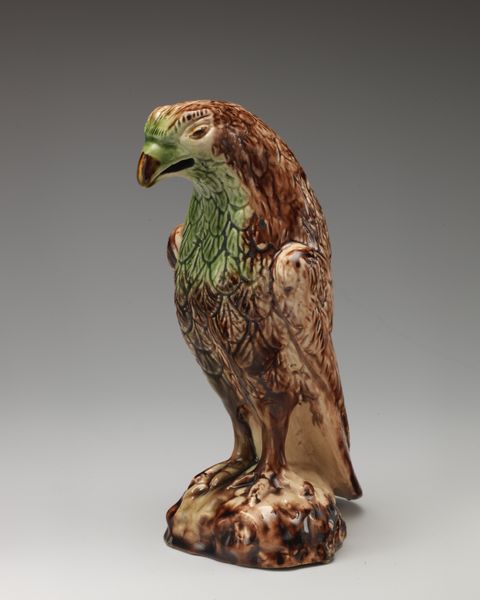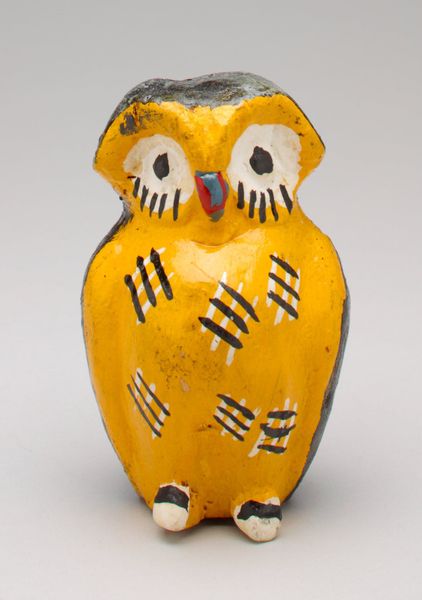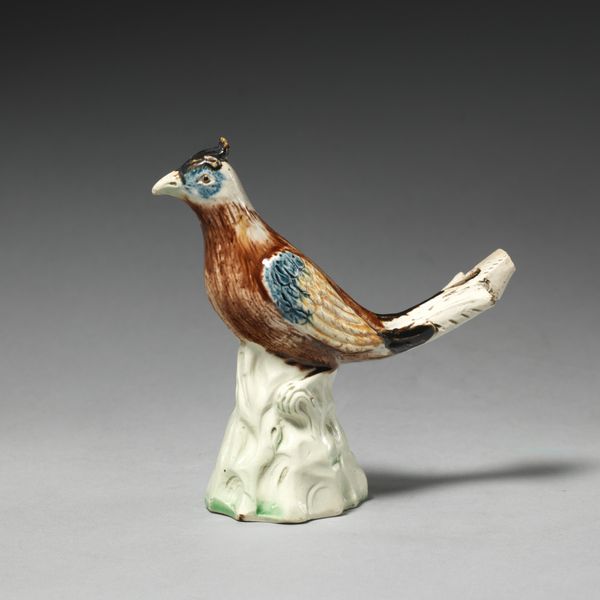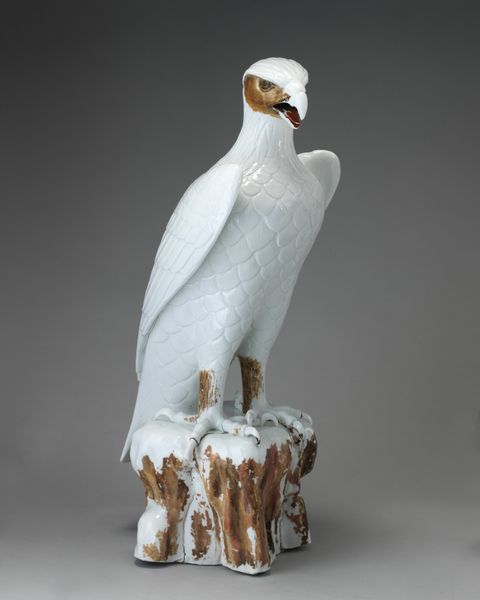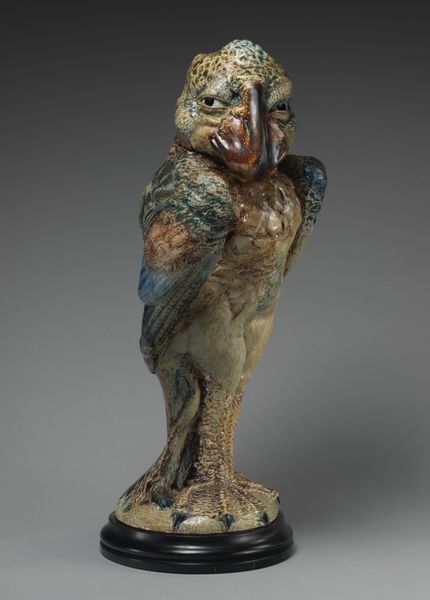
ceramic, porcelain, sculpture
#
baroque
#
ceramic
#
porcelain
#
sculpture
#
decorative-art
Dimensions: Overall (confirmed): 20 1/2 x 11 9/16 x 9 3/8 in., 27.5lb. (52.1 x 29.4 x 23.8 cm, 12.4739kg)
Copyright: Public Domain
Editor: This is an exquisite porcelain sculpture, “Eagle Owl,” crafted around 1730-1740 by the Meissen Manufactory. It's currently housed at The Met. I’m immediately struck by how realistic the artists tried to render this bird of prey using such delicate materials. What can you tell me about it? Curator: It's fascinating to consider this owl within the context of 18th-century European porcelain production. Meissen, being one of the earliest European manufacturers to master hard-paste porcelain, essentially replicated the closely-guarded secrets from China, where porcelain had a rich and ancient production tradition. Editor: So, the "secret" of the materials is the valuable part? Curator: Absolutely. The technical ability to produce such a work elevated Meissen's social standing. The act of creation— the sourcing of kaolin, the precise firing process—these become almost alchemical. This wasn’t just art, it was industry, politics, and social currency all wrapped into one object. How does understanding that process inform your interpretation of the sculpture? Editor: That adds another layer – it isn’t *just* a decorative object anymore. Knowing the effort and ingenuity behind its creation highlights the amount of work invested. So this links the work with both high society *and* the working class! Curator: Precisely. And consider the consumption patterns of the time. Where might something like this owl be displayed, and for whom? The ownership and display become part of the artwork's narrative as well. Editor: Thinking about this owl as both a symbol of artistry *and* an artifact of labor really broadens my understanding. It is the physical representation of an entire socio-economic framework. Curator: Indeed. The value lies not just in the artistic skill, but in the material’s origin, the method of manufacture, and the place it held in society.
Comments
No comments
Be the first to comment and join the conversation on the ultimate creative platform.
